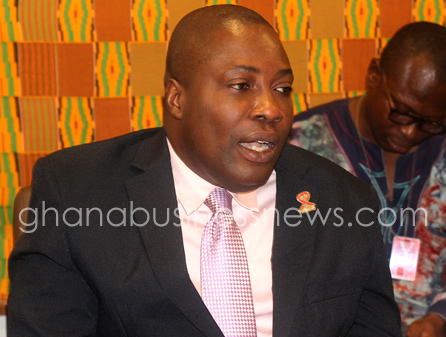US government supports Ghana HIV response with $200m in 10 years

As the international HIV and AIDS community prepares to showcase at the 22nd International AIDS Conference in Amsterdam, The Netherlands, the important advances in HIV prevention science, including the latest research on vaccines and other future prevention tools; new lessons learned from the scale up of pre-exposure prophylaxis and other proven interventions; and innovative strategies for key populations, such as adolescents and young adults, the US President’s Emergency Plan for AIDS Relief (PEPFAR) is celebrating 15 years globally and 10 years in Ghana.
By 2017 PEPFAR had supported HIV testing services for more than 85.5 million people including more than 11.2 million pregnant women.
Addressing journalists in Accra today May 16, 2018 to mark its work, the Deputy Chief of Mission at the US Embassy in Accra, Melinda Tabler-Stone recounted that the initiative has also supported 13.3 million men, women and children on lifesaving treatment; brought care to 6.4 million orphans, vulnerable children and their caregivers and helped 2.2 million babies to be born HIV-free.
The US government through PEPFAR has also been the largest contributor to Ghana’s HIV response in the last 10 years since it started operations in Ghana.
“In the last 10 years, United States has supported government of Ghana’s HIV response with about $200 million,” she said.
Through PEPFAR, she indicated that the US government will continue to support Ghana’s HIV response.
Meanwhile, the new HIV national prevalence rate has risen; according to Dr. Stephen Ayisi-Addo, the Director of the National AIDS/STI Control Programme. The rate has increased from 1.61 per cent to 1.67 per cent.
He noted that the country has recorded 19,000 new infections, and 3400 children are infected, with 16000 HIV related deaths recorded.
He indicated that Ghana’s HIV prevalence rate is strongly urbanized, with the Ashanti and Greater Accra region topping the prevalence rate.
“Regional prevalence ranged from 3.2 per cent in the Greater Accra and Ashanti Regions as the regions with the highest prevalence to 0.6 per cent in the Northern region being the lowest,” he said.
He stated that HIV prevalence among the young population (15-24 years), a proxy for new infections, increased to 1.5 per cent from 1.1 per cent.
“The proportion of HIV subtype 1 is 99.0 per cent compared to 0.8 per cent for dual HIV type I and 2 and 0.2 per cent for HIV type 2 infection in the 2017 survey.
Median Syphilis prevalence for 2017 is 0.3 per cent (Confidence Interval: 0.2 – 0.4), an increase from 0.2 per cent, and regional syphilis prevalence ranged from 0.1 per cent in Brong-Ahafo, Upper West and Upper East regions to 2.1 per cent in the Central region,” he said.
The HIV prevalence amongst STI clients is 6.3 per cent, an increase from 5.4 per cent, and Syphilis prevalence amongst STI clients remained at 0.3 per cent. Median Syphilis prevalence for 2017 was 0.3 per cent in both rural and urban locations, whilst mean Syphilis prevalence was 0.6 per cent in both rural and urban locations, he stated.
“A linear trend analysis of ANC HIV prevalence since 2000 shows a declining epidemic,” he said.
Ghana has however achieved a 40 per cent coverage in Antiretroviral Therapy, he said.
By Emmanuel K. Dogbevi
Copyright ©2018 by Creative Imaginations Publicity
All rights reserved. This news item or any portion thereof may not be reproduced or used in any manner whatsoever without the express written permission of the publisher except for the use of brief quotations in reviews.
